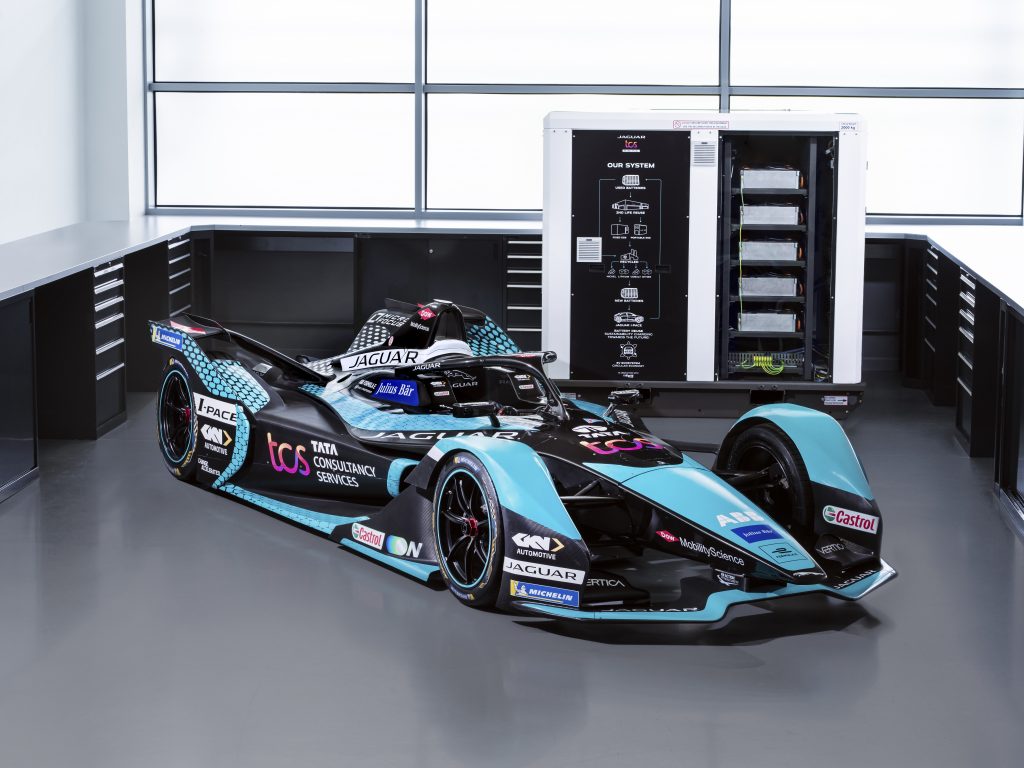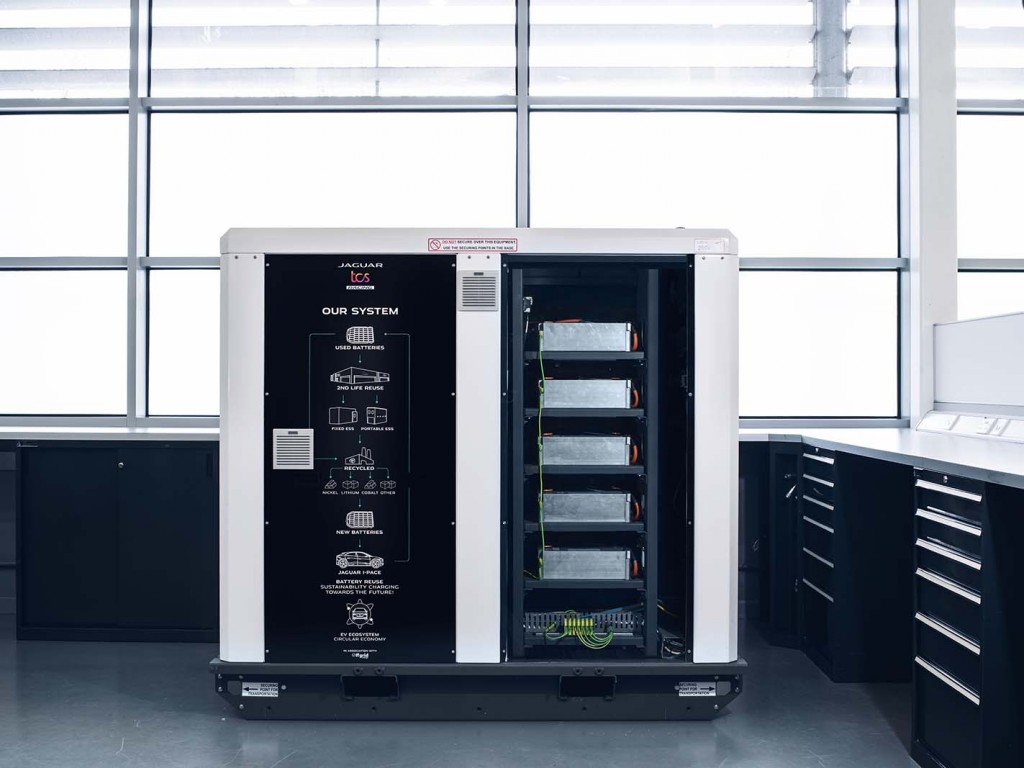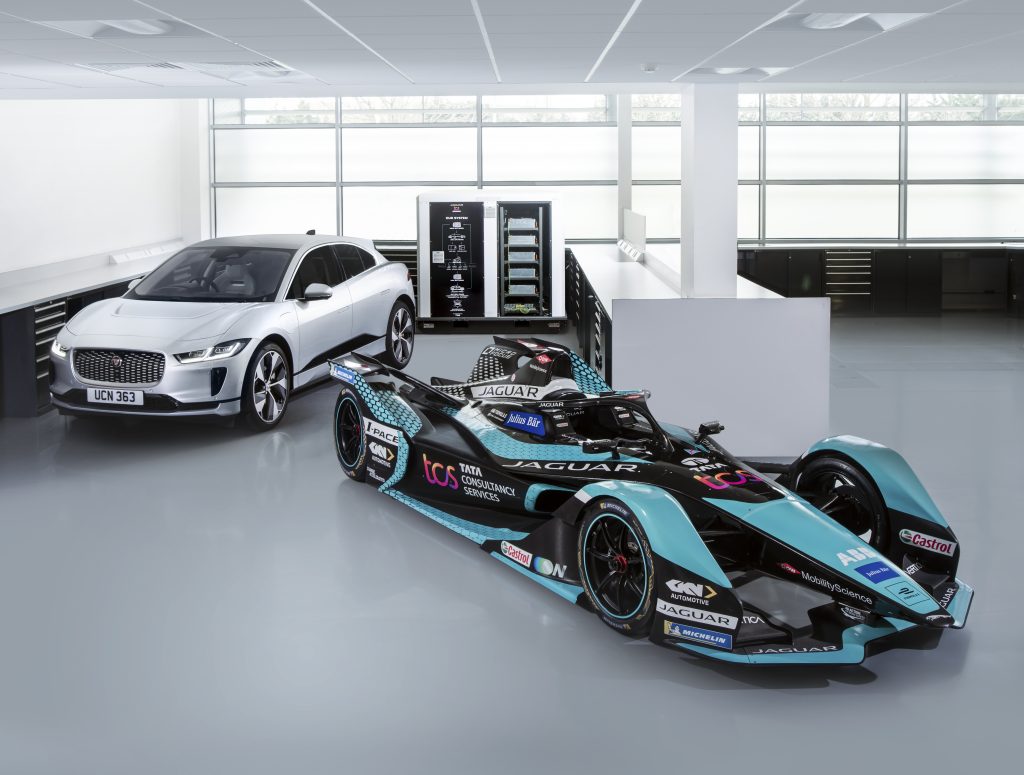Jaguar has partnered up with generator manufacturer Pramac, to develop a new Off Grid Battery Energy Storage System (ESS) from second-hand I-Pace batteries.
Off Grid Battery Energy Storage System (ESS) is a fancy way of saying a portable energy storage unit. Pramac will use lithium-ion cells from Jaguar I-Pace batteries. These batteries will be sourced from cars previously used as prototype and engineering test vehicles.
Advanced engineering

This new Off Grid Battery Energy Storage System will do exactly what it says 0n the tin, supply zero-emission power where access to energy supply is limited or unavailable. The first unit has already been used to help power Jaquar’s e-squad. Specifically, to assist Jaquar TCS Racing ready itself for the ABB FIA Formula E World Championship in the UK and Spain.
Pramac says the system has the capacity of up to 125kWh, which is about enough to power a family home for up to a week. And also more than enough to charge Jaguar’s all-electric I-Pace performance SUV.
Giving Jaguar batteries a second life

After removing the batteries, Pramac recycles any remaining materials back into the supply chain. Charged via solar panels, the unit comprises of a battery system linked to a bi-directional converter and a control management system. Available for commercial hire, the storage units are fitted with Type 2 EV charging connectors with an output of up to 22kW.
A second life for I-Pace batteries can avoid premature recycling and help create another type of energy source when needed.
“The state-of-the-art 90kWh Lithium-ion battery in the Jaguar I-Pace delivers up to 470km/ 292 miles range (WLTP cycle), and with 400PS and 696Nm of instant torque enables acceleration from 0-60mph in just 4.5 seconds (0-100km/h in 4.8s).”
The batteries can last up to eight years or 160 000km, we guess it’s all about how much you use it, but when it finally near its end at least 95% of the battery can be recycled.




